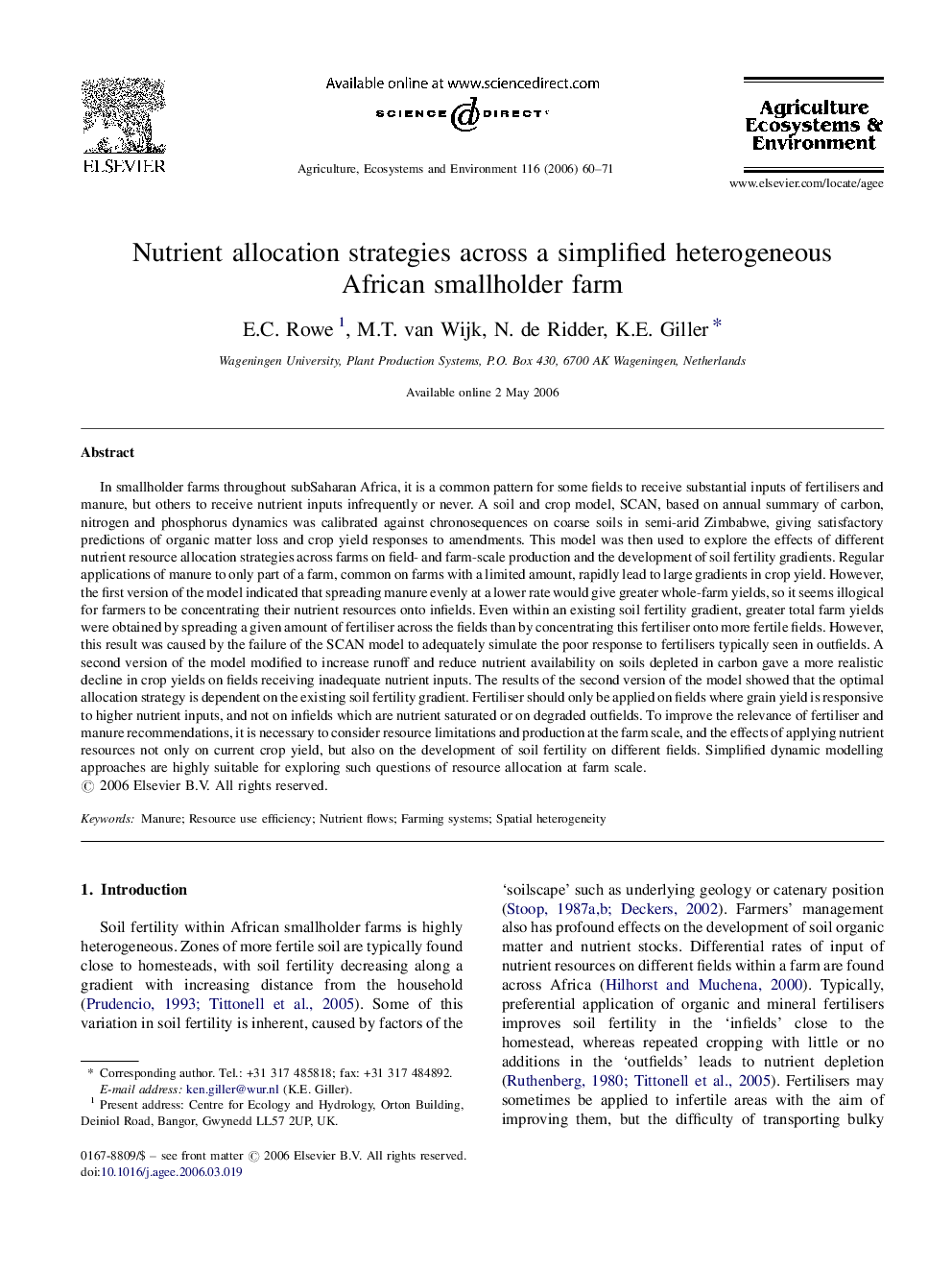| کد مقاله | کد نشریه | سال انتشار | مقاله انگلیسی | نسخه تمام متن |
|---|---|---|---|---|
| 2416007 | 1552147 | 2006 | 12 صفحه PDF | دانلود رایگان |

In smallholder farms throughout subSaharan Africa, it is a common pattern for some fields to receive substantial inputs of fertilisers and manure, but others to receive nutrient inputs infrequently or never. A soil and crop model, SCAN, based on annual summary of carbon, nitrogen and phosphorus dynamics was calibrated against chronosequences on coarse soils in semi-arid Zimbabwe, giving satisfactory predictions of organic matter loss and crop yield responses to amendments. This model was then used to explore the effects of different nutrient resource allocation strategies across farms on field- and farm-scale production and the development of soil fertility gradients. Regular applications of manure to only part of a farm, common on farms with a limited amount, rapidly lead to large gradients in crop yield. However, the first version of the model indicated that spreading manure evenly at a lower rate would give greater whole-farm yields, so it seems illogical for farmers to be concentrating their nutrient resources onto infields. Even within an existing soil fertility gradient, greater total farm yields were obtained by spreading a given amount of fertiliser across the fields than by concentrating this fertiliser onto more fertile fields. However, this result was caused by the failure of the SCAN model to adequately simulate the poor response to fertilisers typically seen in outfields. A second version of the model modified to increase runoff and reduce nutrient availability on soils depleted in carbon gave a more realistic decline in crop yields on fields receiving inadequate nutrient inputs. The results of the second version of the model showed that the optimal allocation strategy is dependent on the existing soil fertility gradient. Fertiliser should only be applied on fields where grain yield is responsive to higher nutrient inputs, and not on infields which are nutrient saturated or on degraded outfields. To improve the relevance of fertiliser and manure recommendations, it is necessary to consider resource limitations and production at the farm scale, and the effects of applying nutrient resources not only on current crop yield, but also on the development of soil fertility on different fields. Simplified dynamic modelling approaches are highly suitable for exploring such questions of resource allocation at farm scale.
Journal: Agriculture, Ecosystems & Environment - Volume 116, Issues 1–2, August 2006, Pages 60–71